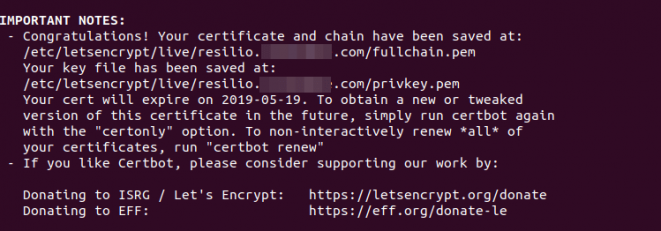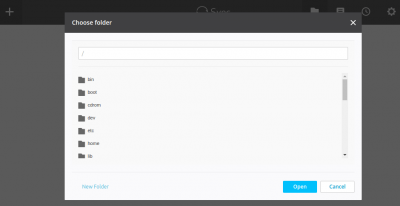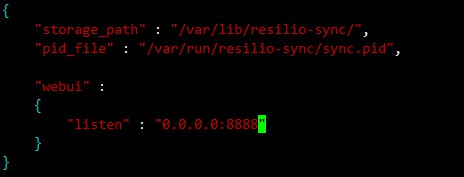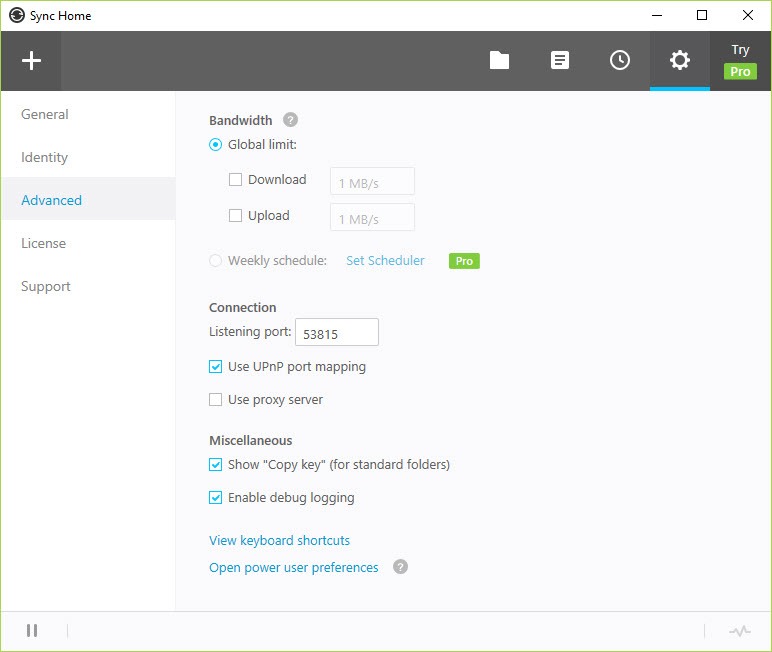

- #Resilio sync on ubuntu permission how to#
- #Resilio sync on ubuntu permission install#
- #Resilio sync on ubuntu permission windows 10#
- #Resilio sync on ubuntu permission windows#

Add to or remove from that list as needed.Ignore Patterns (button opens new window):.File Versioning: No File Versioning (I do versioning on the backup device only).

#Resilio sync on ubuntu permission windows#
#Resilio sync on ubuntu permission install#
) The downside here, however, is that you need to remember to update the whitelist if you install a new program that creates a new folder at the whitelist level (and all other “easy” methods have a similar downside). (This also means you can remove the default folder Syncthing creates for you: C:\Users\AwesomeUserOne\Sync. So, at long-winded last, what I did was create a sync folder for C:\Users\AwesomeUserOne, for example, and whitelisted which folders under that should be synced.
#Resilio sync on ubuntu permission how to#
This can be worked around if you know how to force Syncthing to do so but I’m going to ignore that since it’s not a great idea anyhow - and going one level deeper into each real user’s folder is not that much harder. With Syncthing, however, you can’t create a backup folder out of C:\Users by default (Windows will prevent creation of Syncthing’s marker folder there). Later, I revised that a bit by setting it to ignore things like the browser and antivirus caches. In CrashPlan, all I did at first was set it to backup the entire C:\Users folder and I was done on the simplest machines (CrashPlan probably got tired of such abuse).

Easiest… but also a bit monotonous (and also the only recommended approach as far as I could find).īut, when I was using CrashPlan, I was much lazier than that and wanted similar laziness with Syncthing in the long run. This easy(ish) method is how I set up my wife’s laptop - which acts as no more than just a browser, word processor, and photo archive.īTW, for those who are wondering what “easy( ish) versus easi est” might be, the easiest way, is to create separate sync folders for every user’s Documents, Pictures, and other folders, etc. That is, if you insist on taking shortcuts like I tend to on rare occasion, then this is the less abusive of the shortcuts taken here. The easy(ish) way is probably the way the Syncthing developers would like you to do it.
#Resilio sync on ubuntu permission windows 10#
So, now, finally, to the point: Getting Syncthing to behave with “Users” folders on Windows 10 (actually, Windows Vista and later)… again, at your own risk.Įverything here is as of Syncthing v0.14.45. I had to read and combine several posts to build what I needed and probably wasted far too much time on it (although, most of that was in building up the initial backup, which had to be spent one way or another after CrashPlan’s bail). Thus, setting up a Pi as such is something you do at your own risk and there are plenty of other posts to help you with that. For starters, Syncthing does not claim to be the ultimate backup service (but I figure less-than-ultimate is better than nothing). What this post is not: This post is not a guide to setting up Syncthing on a Pi as a backup service. Also, as just a bonus, Synthing offered a more supported solution to also backup my legacy Windows XP gaming machine (something CrashPlan stopped allowing a couple years ago, and Resilio has outdated support for ). Two things ultimately led me to choose Syncthing over Resilio: (1) open-source review of their security, and (2) a post by Jaime Jiménez, Running Syncthing or Resilio on a Raspberry Pi 3. A friend pointed me to BitTorrent Sync (now called Resilio Sync) which, in turn, led me to their open-source competitor, Syncthing. Thus, I started to look at setting up a remote Raspberry Pi backup server myself. As replacements, CrashPlan was pushing either Carbonite or their own plan for small businesses… but either of those would have at least doubled the cost of backup. With CrashPlan getting out of the home backup business, I found myself shopping for a new backup solution.


 0 kommentar(er)
0 kommentar(er)
